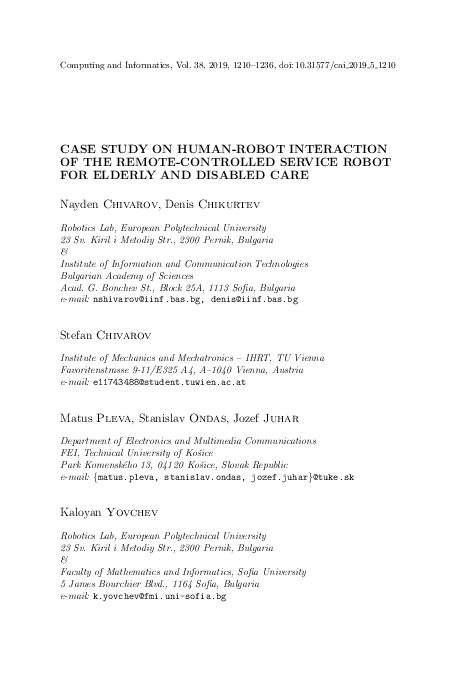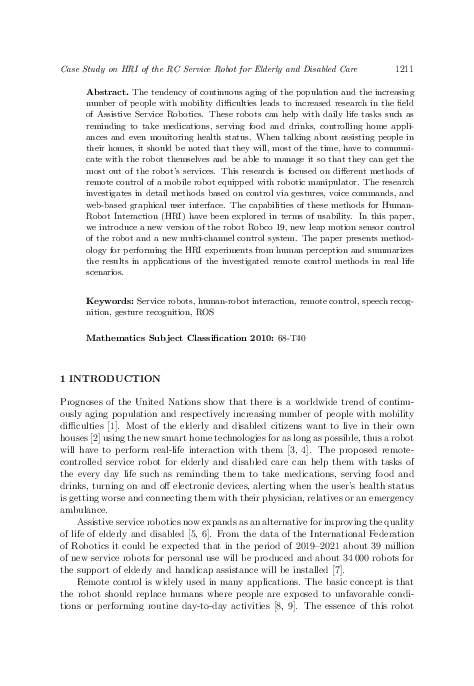Case Study on Human-Robot Interaction of the Remote-Controlled Service Robot for Elderly and Disabled Care
keywords: Service robots, human-robot interaction, remote control, speech recognition, gesture recognition, ROS
The tendency of continuous aging of the population and the increasing number of people with mobility difficulties leads to increased research in the field of Assistive Service Robotics. These robots can help with daily life tasks such as reminding to take medications, serving food and drinks, controlling home appliances and even monitoring health status. When talking about assisting people in their homes, it should be noted that they will, most of the time, have to communicate with the robot themselves and be able to manage it so that they can get the most out of the robot's services. This research is focused on different methods of remote control of a mobile robot equipped with robotic manipulator. The research investigates in detail methods based on control via gestures, voice commands, and web-based graphical user interface. The capabilities of these methods for Human-Robot Interaction (HRI) have been explored in terms of usability. In this paper, we introduce a new version of the robot Robco 19, new leap motion sensor control of the robot and a new multi-channel control system. The paper presents methodology for performing the HRI experiments from human perception and summarizes the results in applications of the investigated remote control methods in real life scenarios.
mathematics subject classification 2000: 68-T40
reference: Vol. 38, 2019, No. 5, pp. 1210–1236


